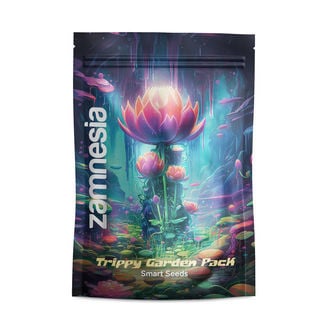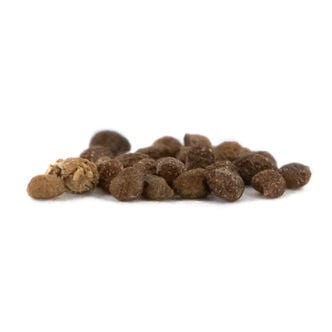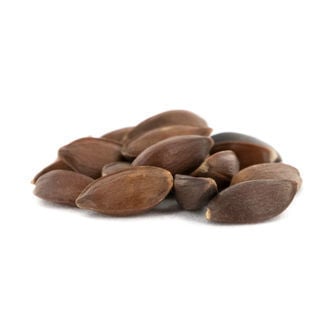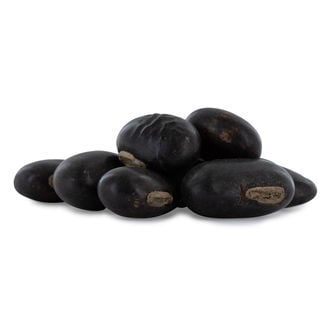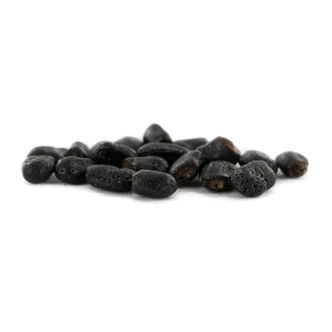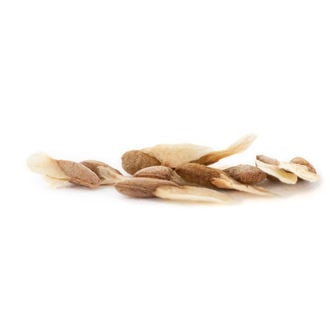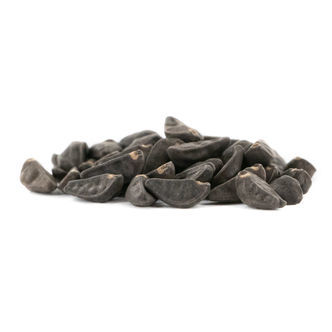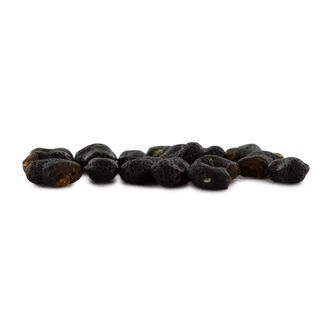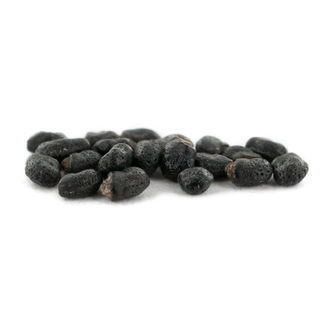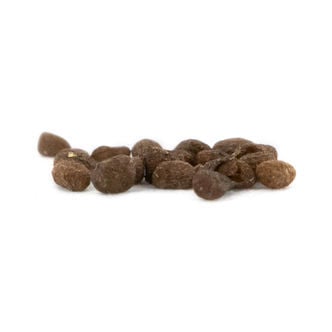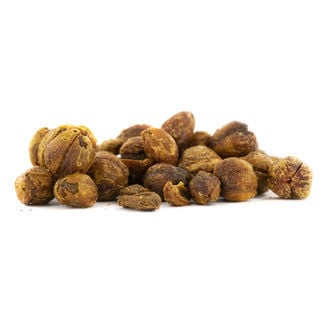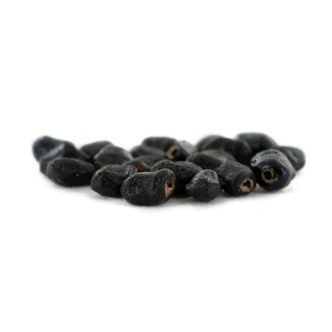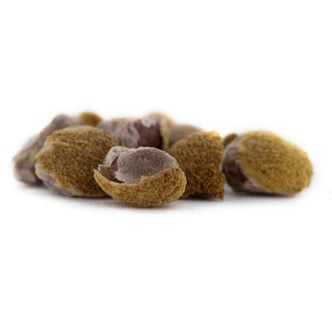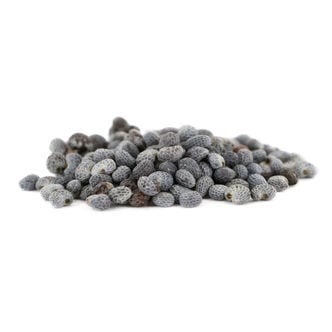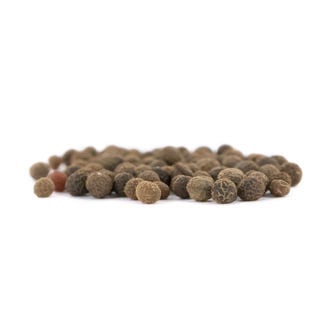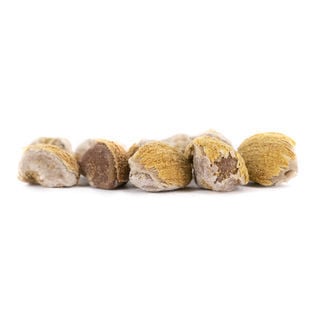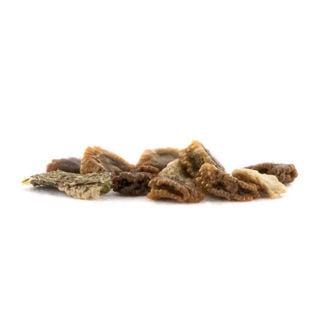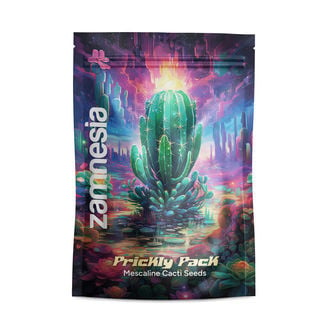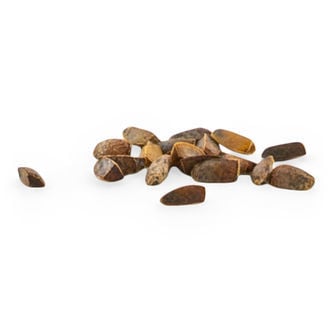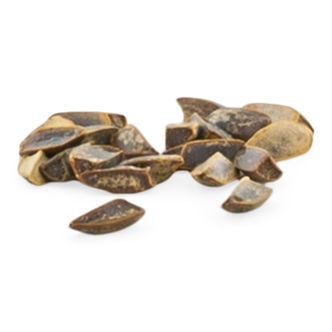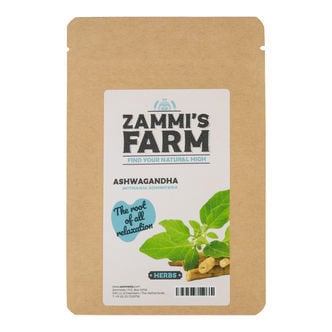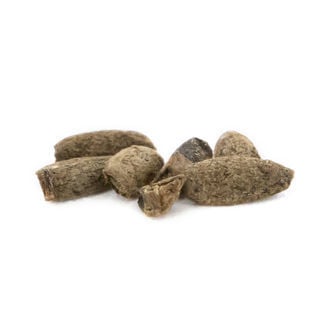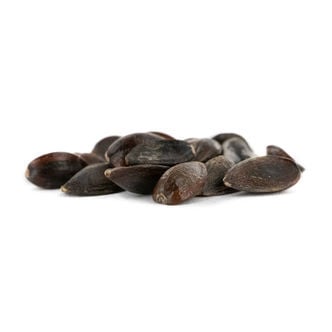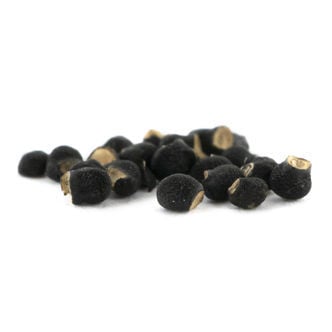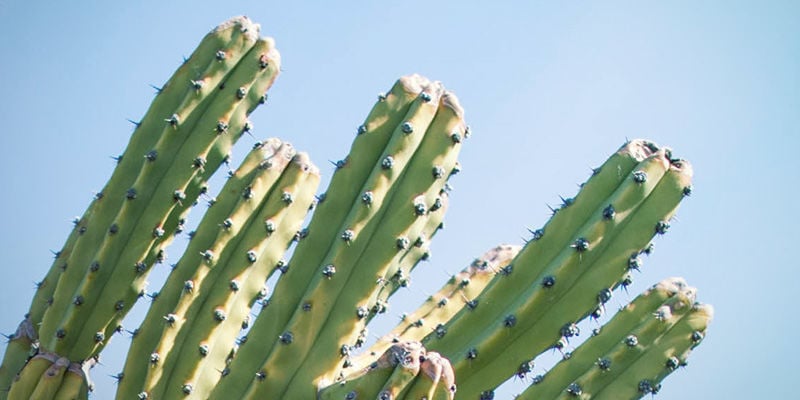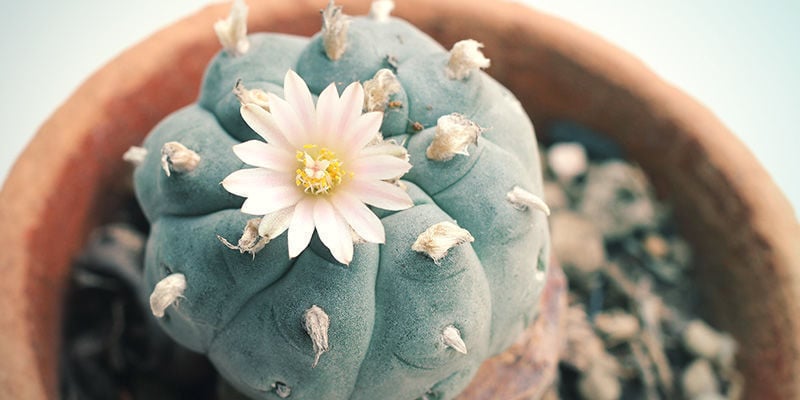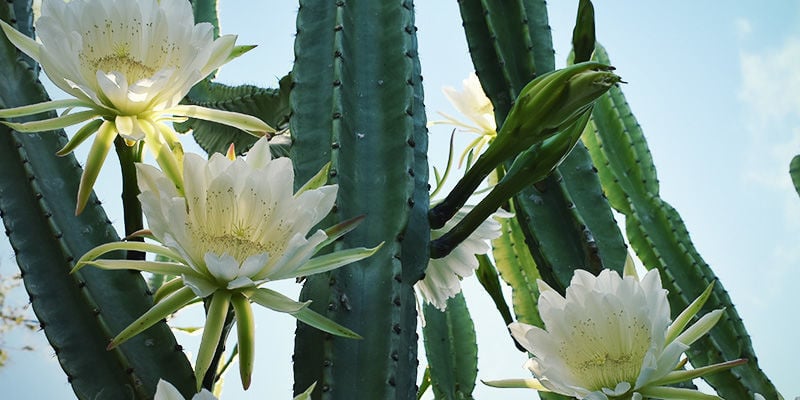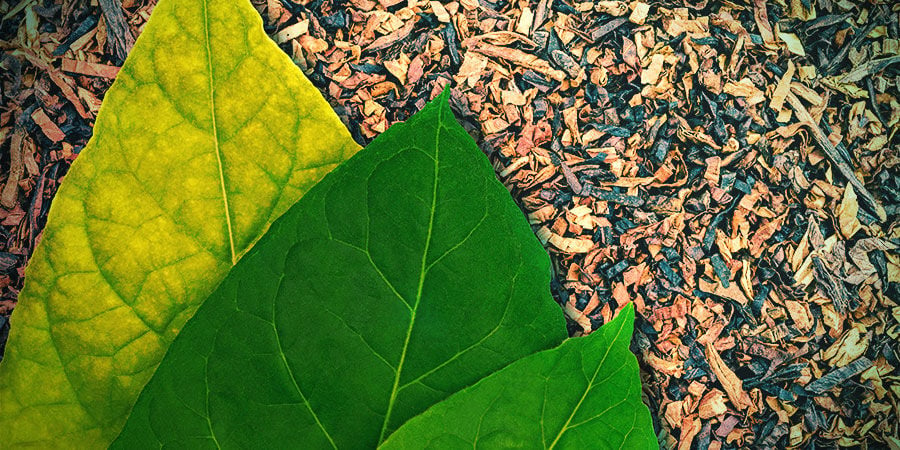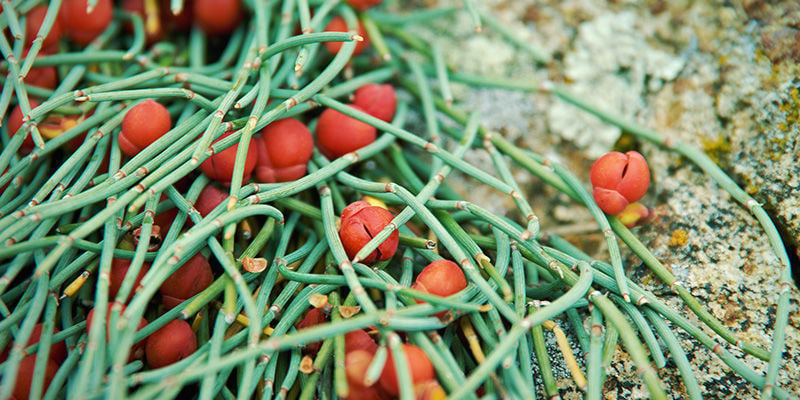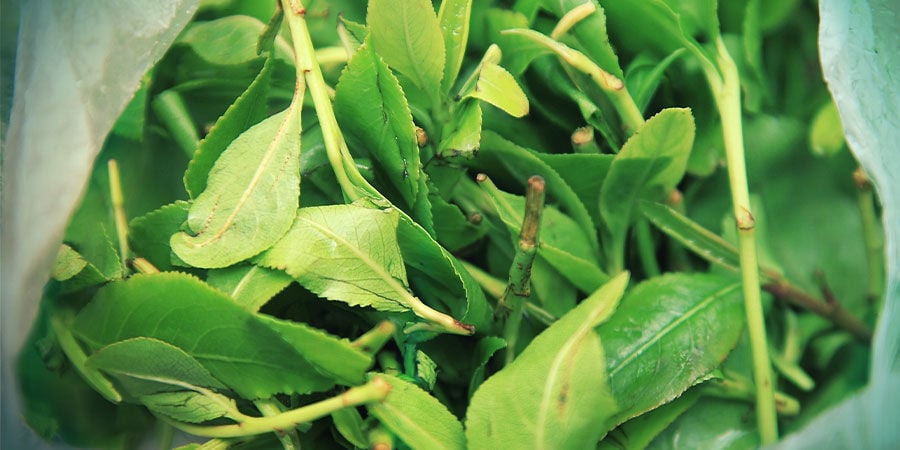Smart Seeds
Our Smart Seeds packages bring the excitement of growing natural psychedelics, ancient aphrodisiacs, sacred South American cacti and more of what Mother Nature has to offer right into your home! How about growing the powerful mind-altering Peyote or the Bolivian Torch cactus from seed and watching them flower right before your eyes? How about doing what the ancient Egyptians did and watch the heavenly blue Morning Glory unravel into full bloom?
Here at Zamnesia, you can find a great selection of Smart Seeds containing some of the most interesting psychedelic and not-so-psychedelic plants, including seeds for hallucinogenic South American cacti, the super-strong Aztec Tobacco, Yopo from South America or the euphoria-inducing Khat from the Middle East. Be sure to check back often to see the latest additions to our Smart Seeds collection!
Smart Seeds - Click here for more infoTrippy Garden Pack - Smart Seeds
This Trippy Garden Pack contains a range of different seeds that will flourish into plants containing legal psychoactive compounds. If a herb garden doesn't quite cut it for you, then these seeds will give you a real project. Experiment with a range of psychoactive plants and see which you like the best.
Aztec Tobacco AKA Mapacho (Nicotiana rustica) 20 seeds
Aztec Tobacco (nicotina rustica), also known as Mapacho, is a wild tobacco plant from the southern part of Mexico and the Yucatan peninsula. What makes this tobacco variety different from others is its strength. This tobacco can have up to twenty times more nicotine than regular tobacco. With our fresh Mapacho seeds you can now grow your own Mapacho tobacco plants at home!
Green Mormon Tea | Ephedra viridis Seeds
Green Mormon tea (Ephedra viridis), also known as green ephedra or Indian tea, is a shrub that grows in dry areas of the Western United States. 20 seeds
Velvet bean | Mucuna pruriens
The Velvet bean (Mucuna pruriens) is a tropical plant that has long been used in many cultures around the world.
Bolivian Torch (Echinopsis lageniformis) 20 seeds
The Bolivian Torch (Echinopsis lageniformis) is one of the psychedelic cacti of South America that plays an important role in Shamanic rituals. It is similar in appearance to the San Pedro cactus but with fewer and wider ribs. Like the San Pedro cactus, the Bolivian Torch contains a number of psychoactive alkaloids including the powerful psychedelic compound Mescaline.
Khat (Catha edulis) 10 seeds
Khat (Qat aka “Flower of Paradise”) is an evergreen shrub that is native to Arabia and East Africa. In these regions of the world, Khat is cultivated and widely consumed as a chew because of the plant’s effect that can cause slight excitement and euphoria. With our fresh Khat seeds you can grow your own genuine Khat plants easily at home!
Morning Glory (Ipomoea tricolor) 10 grams
The Morning Glory vine was favoured by the ancient Maya civilisation thanks to its "heavenly blue" appearance and abundance of the psychedelic tryptamine lysergic acid amide (LSA). Once used ceremonially, its seeds are now available to buy from Zamnesia.
Peruvian Torch (Echinopsis peruviana) 20 seeds
Echinopsis peruviana, better known as the Peruvian Torch cactus is another of the hallucinogenic cacti that is native to South America. The Peruvian Torch contains the psychoactive alkaloid mescaline which makes for powerful, altered states of consciousness. With our fresh Peruvian Torch (Trichocereus peruvianus) seeds you can now grow this sacred cactus easily at home.
San Pedro (Echinopsis pachanoi) 20 seeds
Echinopsis pachanoi, the original San Pedro cactus is one of the sacred cacti of South America. For centuries, this cactus has played an important role in Shamanic culture. The cactus is a native to Bolivia and contains psychoactive compounds, the most important one Mescaline. With our fresh Echinopsis pachanoi (San Pedro) seeds you can now easily grow your own San Pedro cacti at home!
Tobacco (Nicotiana tabacum) 20 seeds
Christopher Columbus, when he set out to find the New World was the first Westerner that came in contact with a plant that the natives called Tobacco. The peoples of the newly discovered land dried the leaves, lit them and engaged in a strange ritual of “smoking” for recreational purposes. Tobacco (Nicotiana tabacum) is now cultivated everywhere and you too can grow Tobacco with our fresh...
Black Oil Plant Seeds (Celastrus paniculatus) 5 grams
Celastrus paniculatus, also known as Black oil plant, climbing staff tree and intellect tree is a woody, fruit-bearing vine from India.
Echinopsis macrogona (Trichocereus macrogonus) 20 seeds
Echinopsis macrogona (AKA Trichocereus macrogonus) is a sacred cactus. Like the Peruvian torch cactus, Echinopsis macrogona contains mescaline which gives it powerful psychedelic and hallucinogenic properties. With the Echinopsis macrogona seeds available at Zamnesia you can now grow this sacred cactus at home!
Hawaiian Baby Woodrose Madagascar (Argyreia nervosa) (10 seeds)
Due to popular demand, we've added this Madagascar variety of Hawaiian Baby Woodrose Seeds, which is reportedly stronger than other varieties.
Poppy (Papaver somniferum) Seeds
Poppy (Papaver somniferum) is the plant from which opium, morphine, and heroin are made. The poppy seeds themselves don’t contain any alkaloids. With Zamnesia Poppy Seeds, you can grow your own poppy plants at home with ease!
California Poppy (Eschscholzia californica) 100 seeds
California poppy makes a stunning addition to many ornamental gardens, earning attention due to its bright and vibrant orange shades.
Hawaiian Baby Woodrose
Hawaiian baby woodrose (Argyreia nervosa) is a perennial climbing vine with large heart-shaped leaves and white trumpet-shaped flowers. Originally native to India, it now grows around the world, including Hawaii. Its large furry seeds grow in seedpods and contain the psychedelic LSA.
Kanna Seeds (10 seeds)
Sceletium tortuosum, commonly known as Kanna, is a succulent plant native to South Africa. Local people chew it for mood elevation. The plant is carefree and makes a great houseplant, but is hard to find in garden centers, so you need a seed supplier.
Prickly Pack - Mescaline Cacti Seeds
This variety pack of cactus seeds contains everything you need to start cultivating your own mescaline cacti at home! There are numerous species of mescaline-containing cacti, and each one has a slightly different combination of alkaloids, giving each distinct effects. With this pack, you have a range of mescaline cactus seeds to experiment with.
Marihuanilla (Leonurus sibiricus) Seeds
A beautiful plant with a tall central stem and enchanting purple/pink flowers, marihuanilla (Leonurus sibiricus) can easily take centre stage in any garden. Its smell is similar to that of a cannabis plant and it attracts plenty of helpful pollinators. Plants enjoy sunny spots and well-drained soil, and overall, they are not excessively demanding.
Wild Dagga (Leonotis leonurus) Seeds
Originating from South Africa, wild dagga makes for an eye-catching plant, thanks to its bright orange colouring. Not only appealing to the eye, this plant is also easy to cultivate, making it appropriate for growers of all levels. The seeds can be sown anytime, but perform best between February and May. A little upkeep is required, and they'll deliver year-round.
Ashwagandha (Withania somnifera) Seeds
Ashwagandha (Withania somnifera) is a shrub native to India, and it has been used for many years in the Ayurvedic tradition. Attractive and easy to cultivate, why not try growing it in your very own garden?
Klip Dagga (Leonotis nepetifolia) Seeds
Native to Africa and Southern India, klip dagga is a colourful plant with a unique appearance. Fortunately, it's also pretty simple to grow. Sow the seeds indoors at the end of April in moist soil, and keep the same conditions until they germinate. Then, move them outside so they can flourish. Provide them with plenty of light and warmth, and harvest leaves and flowers when ready.
Ephedra (Ma Huang) 20 seeds
The dried leaves of the ephedra plant act as a natural stimulant and energizer and have an appetite-suppressing effect. With our fresh ephedra sinica seeds you can now grow your own ephedra plant easily at home.
Peyote (Lophophora williamsii) 20 seeds
With our freshly harvested high quality Lophophora williamsii (Peyote) seeds you can now grow your own Peyote cacti at home. As compared to fully grown Peyote cacti plants, cultivating your own Peyote can be more economic because you can grow them at relatively low cost. Plus, being able to watch your Peyote seeds grow to full-grown flowering plants can make for a fascinating hobby all on...
Smart Seeds - Grow Natural Psychedelics And Ancient Aphrodisiacs At Home

When we think of psychedelics, LSD, magic mushrooms or DMT come to mind, but the world of natural psychedelics is so much more diverse and has a lot more of mind-altering substances to offer. It's these substances that the ancient cultures and tribes used for spiritual ceremonies or profound insights into existence. Nowadays, these powerful plants aren't hard to come by anymore, in fact, it was never so easy to find them and grow them at your home.
Zamnesia offers a wide and ever-expanding range of so-called smart seeds. Whether you want to grow and use a specific cactus, cultivate your own tobacco or some kind of natural aphrodisiac - you can browse our shop and find something that suits your needs. Mighty seeds of Mother Nature are at your hands to grow at home. Check out our variety of smart seeds once in a while to see what is available.
In this article, we dive deeper into different smart seeds and educate about their origins, their use and effects. We also inform you about how to grow these seeds for the best results. Let's have a look!
CACTUS SEEDS
BOLIVIAN TORCH
Bolivian Torch (Echinopsis lageniformis) is a psychedelic cactus from Bolivia, South America. It is very similar to the San Pedro cactus in its appearance but has fewer and wider ribs. Just like the San Pedro cactus, the Bolivian Torch contains a multitude of psychoactive alkaloids, like the strong psychedelic compound mescaline.
In its natural environment in the hot and humid climate of Bolivia, the Bolivian Torch can reach heights of up to 4.5 meters. With our fresh seeds, you can now grow this holy cactus easily at home. Once the seeds germinate, they only need very little water, only watering it when the soil has dried out. For optimal results, you should keep the conditions of growth moist and well ventilated. You will achieve the best outcome with cactus potting and soil mixes that are commonly available in gardening stores. The Bolivian Torch will grow into a green, columnar cactus with beautiful and fragrant flowers.
This cactus is considered as holy and therefore plays an important role in shamanistic rituals. It has a long history in such religious and spiritual rituals in South America. The contained psychoactive compounds, especially mescaline, alter the mind and bring the user powerful visions.
PERUVIAN TORCH
The Peruvian Torch (Echinopsis peruviana) is another hallucinogenic cactus that has its origins in South America. It also contains mescaline.
It is a fast-growing cactus that grows on the western hillsides of the Andes in Peru. You can find it there in altitudes between 2,000 and 3,000 meters. With our fresh seeds, you can watch the cactus grow into an impressive and columnar plant. The Peruvian Torch will normally germinate after 10-14 days. Once sprouted, you need to keep the conditions of growth warm and dry. Be sure to give it as much direct sunlight as possible. For the best results, we recommend a commonly available, slightly acidic, cactus potting mix.
Like the other holy cacti of South America, the Peruvian Torch contains numerous alkaloids, including the psychoactive mescaline. You will get a strong, mind-bending experience with hallucinations. This lets the cactus play an important part in shamanistic and religious rituals.
PEYOTE
It is a fascinating hobby to watch a Peyote (Lophophora williamsii) cactus grow. Peyote is native to Mexico and the South of America, so it prefers a very dry climate with plenty of sun. It grows best in a mineral-rich soil. For this special type of cactus, it has proven best to use a soil mix that consists of 50% sand, 25% grit or bims and 25% normal potting soil. Your Peyote will thrive in a minimum temperature of 10°C and a lot of direct sunlight. At the end, you will gaze at a pale green cactus with pink and white flowers. What's best, we provide you with a detailed and easy instruction of how to grow your own Peyote that comes together with the seeds.
Peyote contains more than 50 alkaloids, including the strong psychoactive compound mescaline. The intake of the cactus can induce effects similar to LSD or psilocybin that last up to 10 or 12 hours. It can trigger deep, metaphysical and spiritual introspection and insight. During the trip you will further see rich visuals or experience auditory effects.
SAN PEDRO
San Pedro (Echinopsis pachanoi) is another cactus that for centuries played an important in the shamanistic cultures of Bolivia, South America. Like the above-mentioned cacti, it is considered as holy.
The cactus is really easy to grow with our fresh seeds. It loves a peat-based special soil for cacti and succulents that you can find in any well-sorted gardening store. San Pedro needs very high humidity for the best germination results. After the seeds sprout, ensure a good air circulation and ventilation to prevent mould. The growing environment should be warm and shaded. It is really important to keep the soil moist during germination and early growth. In the end, San Pedro will be a columnar, green cactus with white flowers.
Like with all the South American sacred cacti, San Pedro contains psychoactive substances, notably mescaline. It is widely popular as a ceremonial plant.
TOBACCO SEEDS
AZTEC TOBACCO, AKA MAPACHO
Aztec Tobacco (Nicotiana rustica) is also known as Mapacho. It is a wild tobacco plant from the south of Mexico and the Yucatan peninsula. It sets itself apart from other tobacco plant with its strength.
Mapacho is a great, aromatic plant to grow. Although it likes a hot, subtropical climate, you can grow it in colder climates without problems. The plant grows fast and easily and can reach heights of 2 meters. It will develop nice yellow flowers. It is recommended to plant your seeds in a sandy and nuturious soil and use deep pots. This way, the Aztec Tobacco will grow long roots that lead to optimal results. If your climate is warm enough, you can also plant the seeds directly into the soil. The soil has to be kept moist, and the plant needs plenty of sunlight. Our fresh seeds ensure a quick germination and the best growth.
Before you can use the tobacco, you have to cure it after harvest. This is done by hanging the leaves to dry in the sun or use a closed room with indirect heat for several weeks.
The Mapacho is so strong that it contains up to twenty times more nicotine than normal tobacco. It is very aromatic and can be used to roll your own cigarettes or cigars.The dried tobacco leaves can be ground and used as a snuff, too. In some parts of South America, the leaves are soaked in water and then sniffed which is called "singado".
TOBACCO
When Christopher Columbus discovered America, he discovered a plant the natives called Tobacco (Nicotiana tabacum). The peoples of the New World had the habit of smoking it and blow the tobacco smoke out of their noses while having a good time. Today, tobacco is consumed all over the globe.
Tobacco loves warm and average temperatures around 20-30°C. It is best planted in soil that doesn't have high levels of nitrogen. Our fresh seeds ensure a good germination rate and optimal growth.
Tobacco is smoked for its relaxing and energising effect on the body it can have. Nevertheless, it can also make a wonderful ornamental plant with its big, fleshy leaves and pink flowers.
OTHER SEEDS
MA HUANG
Ma Huang (Ephedra sinica) grows in parts of north-eastern China, Russia and Mongolia. The indigenous peoples from these regions use the plant since 5000 years for therapeutic uses.
To grow Ma Huang is not very difficult and you don't need any special expertise. You can germinate the seeds indoors or outdoors in moderate temperatures. But the plant likes it on the warmer side with lots of sun. It is best to grow Ma Huang indoors if you live in countries with colder climates like the UK. Our fresh seeds will make for a troubleless grow.
The dried leaves of Ma Huang are a natural stimulant and energizer. They also have appetite-suppressing properties. The effect it induces has lately become very popular in the West where people use it to reduce their appetite or as a natural way to keep them energised. You can easily make a tea with the dried leaves of Ma Huang.
KHAT
Khat (Catha edulis) or "Flower of Paradise" is very popular all across the Arabian Peninsula and in some parts of Africa. It is an evergreen shrub.
Regardless of some saying, Khat is not too difficult to cultivate. Our fresh seeds ensure an optimal germination rate and success with growing Khat. If you consider some key elements when growing Khat, then you will be rewarded with a helpful plant. You can plant the seeds in a cactus soil mix, vermiculite, perlite or a mix of these. As long as the potting mix is well drained, then you are on the safe side. This is important because the seedlings are pretty sensitive to mould. Khat prefers a rather warm and sunny place but don't put it in direct sunlight. Only water the plant when the soil is dry. The seeds will sprout within a week, and once the seedlings gain a height of 5-10cm, you can repot them.








 United States
United States
